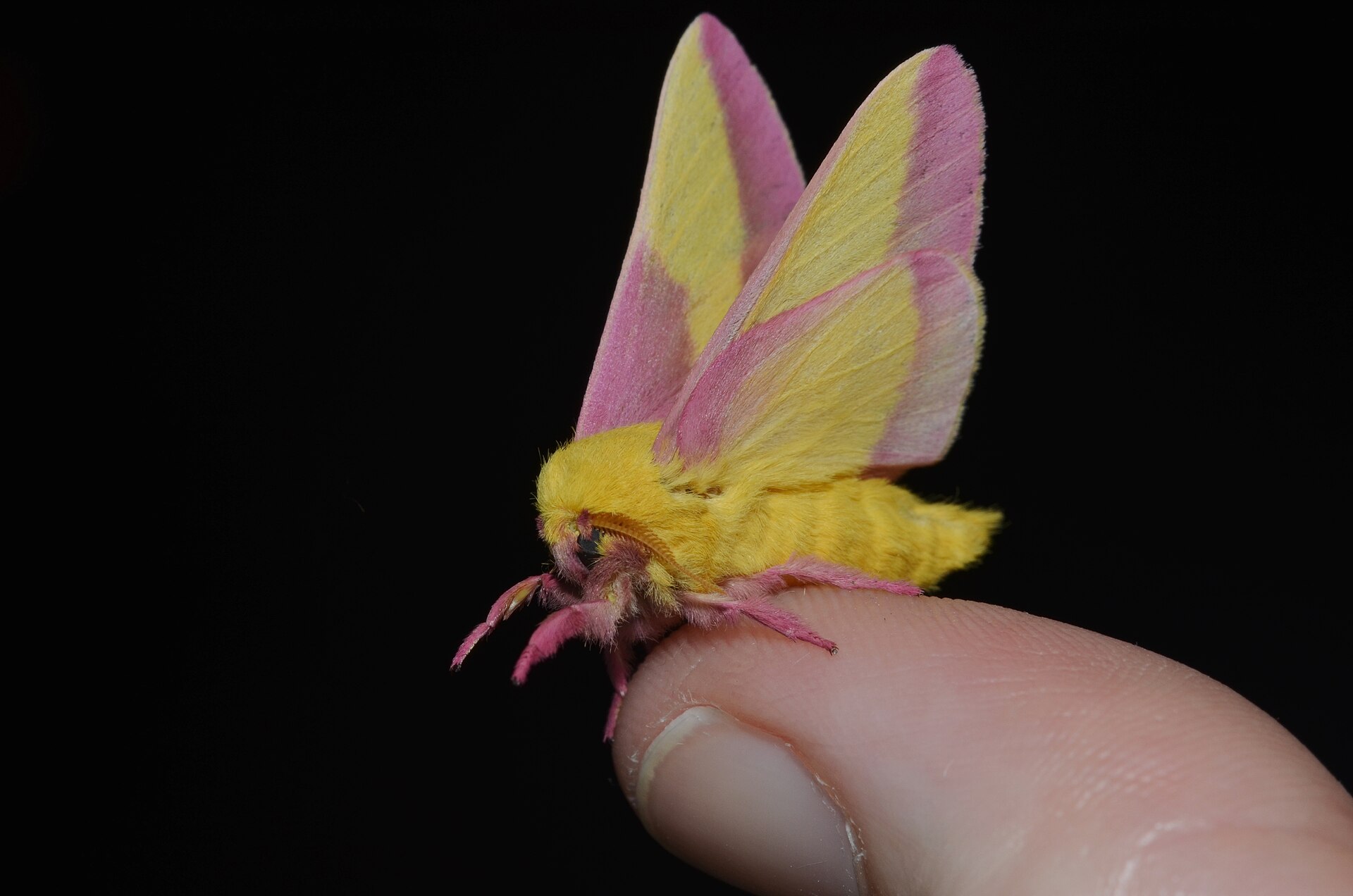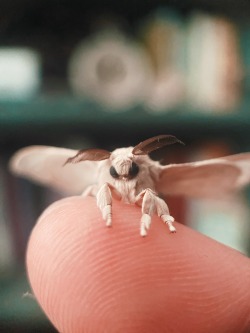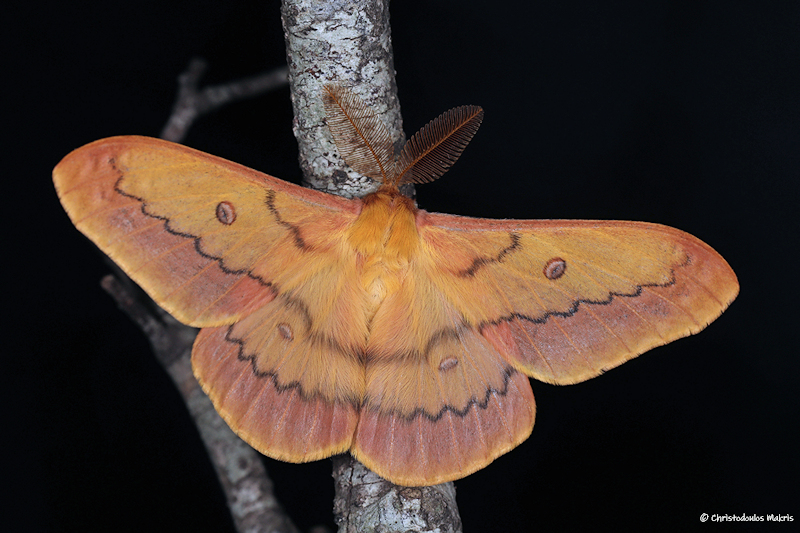🦋 MOTHS 🦋
Most people are highly dismissive of moths, either branding them as cloth-eating pests or being indifferent to them. But!!! Moths are extrmely important!!! Below I will list why they are important, and also give a general overview of them.
Moths are:
- Very important to the food chain (as prey)
- Major pollinators - They keep night-blooming plants alive, and account to ~15% or more of all pollination! They're often more efficient than bees!
- Adorable and beautiful! Keeping nature more colourful and pretty is very important! ♥
I am quite new to the moth world myself, so if you wish to learn more about moths and their importantce from someone more qualified, check out butterfly-conservation.org , and for great moth videos, i recommend Bart Coppens !
Moths belong to the Lepidoptera order of winged insects, together with butterflies they make up 180.000 different species, though moths make up the wast majority of this number with over 160.000 described species. Moths are actually quite a bit older than butterflies on the evolutionary scale, yet ironically enough a moth is defined simply as "Any species of the Lepidoptera order that is not a butterfly."
But here are some general things that make them different:
- Moths rest their wings downwards, over their abdomen. Butterflies rest them vertically up
- Moths are mostly nocturnal, while butterflies are diurnal
- Moths generally have comb-like or feather-like antennae, while butterflies have more regular, insect looking ones
- Moths are more visually fuzzy than butterflies, even though both have the same hair-like scales
Again, this is NOT a scientific guide to differetiate them. Moths are defined only as non-butterfly Lepidopterans.
The best way to warm up to moths is to find a cute or fascinating species you really like and do some research into it. This will help you see moths are more than those boring, drab-coloured little things that sometimes fly into your house (even though those are still deserving of love!). So if you're at all interested in looking at cute/cool moths, here are some of my favorites:
Rosy Maple Moth Dryocampa rubicunda

The Rosy Maple Moth is a small north american moth, it belongs to the Dryocampa genus, it has a wingspan of 3-4.5 cm in males (females are slightly bigger), making them wery smol. They feed on maple leaves and as adult moths have a light pink-yellow color scheme. Their antennae and legs are pink, but their wings are pink-yellow as previously mentioned.
Their life cycle begins with eggs, which are laid shortly after fertilization. The eggs themselves are tiny in size and yellow in color. They hatch after ~2 weeks or so, upon which their larvae come out. The larvae are at first small and light green, they go through 5 moults before pupating anywhere from 2 weeks to the duration of winter. Then the adorable little fuzzy pink moths come out :3. If you wish to learn about their life cycle in more detail, check out this video from someone WAY more qualified to talk than me. (this goes for basically every species I'll cover!)
Domestic Silk Moth Bombyx mori

You've probably seen this moth online already! Maybe you saw it in some of the wonderful work of Jaklynns or in some of the countless moth art pieces which use it as a reference. The domestic silk moth as the name implies is a domesticated species of silk moth which is used in the production of silk (specifically it's cocoon). Sadly, during silk production these cocoons are boiled with the moth still inside, which creates a high-quality and smooth final product. This doesn't have to be the case, there are ethical ways to make silk which allow the moths to complete their life cycle, it's called peace silk or ahimsa silk and I highly suggest you purchase it instead of ordinary silk the next time you shop for materials or clothing
Anyways back to the moth, it begins it's life cycle ~14 days after fertilization and egg-laying, as the larvae emerge from their eggs. The larvae are quite picky eaters, prefering to eat only White Mulberry (though they will eat other Mulberries if white isn't available). The larvae are white in color and eat continiously, they typically turn darker before multing (which they do 4 times before cocooning). They then make their cocoon out of hundreds of meters of super thin raw silk, and emerge after ~2 weeks. Here is video of silk moth breeding done by an expert.
If the moth survives the cocoon stage, it will emerge as an adult domestic silk moth, and is characterized as small (3-5cm wingspan) white and fuzzy. Sadly due to centuries of inbreeding and domestication, these moths have lost their ability to fly, as well as their survival instincts and today have major fertility issues. Despite how badly they are treated and how deformed they've become due to humanity, these moths are still adorable :3
Autumn Empror Moth Perisomena caecigena

A lesser known moth from a lesser known genus of Saturniidae, they're common in Southeastern Europe, Cyprus and Turkey, with endemic populations in Palestine and Iraq (Nässig 2002, Khudhur 2020). They have a beautiful soft pink-yellow pattern on their wings, which have a span of 6-8 cm (smaller in subspecies).
As the name implies, they are active during autumn, starting in September and peaking around late October, before ending in November. During this time they breed and lay eggs, which stay dormant until early spring. Once the eggs hatch the caterpillars will slowly mature until late spring, before pupating and waiting to autumn. The larvae typically feed on Oak, but they've been found to like other trees too, notably Pear and Beech. When autumn comes again they emerge from theur pupa as beautiful adult Autumn Emperor Moths, they only live for about 7 days if unpaired, and even less if otherwise,
Overall this is an insanely cool moth to me, and I will try to trap some of them this October (as they are active in my area) and post pictures on here! I really missed my chance to see cool moths this summer, so I'm really glad such a beautiful species is active during autumn where I live.